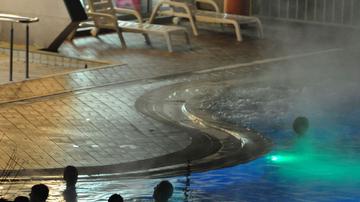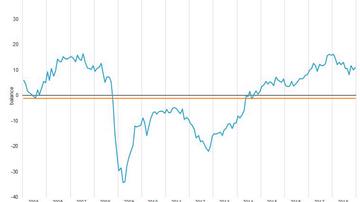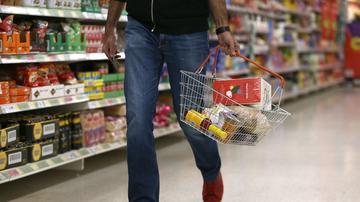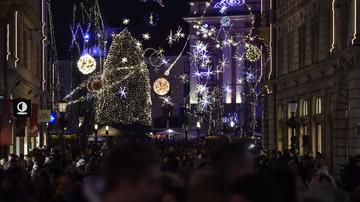
Our average school day in figures was this:
5:45 We got up pretty early. 22 of us got up between 5:45 and 6:15, 21 in the next half hour, but most of us (36) got up between 6:45 and 7:15. Boys usually got up earlier than girls.
8:00 As many as 95 of us started their lessons in the morning one week and in the afternoon the next week. Some of us had lessons in the afternoon for the whole year because in the morning older children (grade 5 and more) were at school.
8:50 Lesson time. We were well supplied with school material that we needed for the lessons. We almost did not need any state support; only four of us got school books and other supplies and two got clothing and footwear. 87 of us had proper footwear and 83 of us were warmly dressed in the winter.
9:35 Lunch time! In all municipal schools supplementary meals were organised. We also had so-called milk kitchens where our snacks were prepared, mostly milk, cocoa, coffee, butter, margarine, cheese, jam, raw fruit and meat products. We liked eating school lunches since as many as 70 of us had supplementary meals and 16 did not because they had enough to eat at home and 14 because of lack of funds or because of inconsiderate parents.
10:10 And finally our favourite subject: 23 of us liked arithmetic best, 20 found all subjects equally interesting, and 14 liked drawing the most. Our curriculum was not very extensive. Grades 1 and 2 had these subjects: Slovene, arithmetic, drawing, singing and physical education. In addition to these, grades 3 and 4 had the following subjects: geography, history, natural sciences and handiwork. Pupils in the first three grades liked arithmetic the most, while the most popular subject in the fourth grade was history.
11:00 Final hours of instruction. Boys learned because they wanted to become drivers; those from rural and industrial areas also wanted to become carpenters or other craftsmen, while those from urban areas also wanted to become engineers. Girls mostly wanted to become seamstresses or teachers; those from urban areas also wanted to become medical workers. Our average grade was 3.1. 16 of us repeated the grade (at least once). Higher grades than the national average were received by children whose parents were traders or professionals (e.g. economists, lawyers, medical doctors) or artists, administrative personnel or managers.
12:00 Time to have lunch at home. 34 of us regularly ate meat, milk and fruit. As regards reading proficiency, we made a lot of progress. Out of 100 pupils in grade 1 55 did not know how to read, in grade 2 23, in grade 3 20 and in grade 4 17. More boys than girls were not able to read. We loved reading the children’s magazine Ciciban and various fairy tales. After lunch father often drank some alcohol. When he was in a good mood, we were in a good mood as well. Out of 100 boys in grades 1–4 in rural areas 12 regularly drank alcohol; in industrial areas 9 and in urban areas “only” 2. Our families were large; 46 of us lived in families with 6 or more household members.
13:00 Those from rural areas had more work at home. 52 of them had to do light work and 19 had to do heavy work. Children in industrial areas had to work less; 49 of them had to do light work and 9 had to do heavy work. In urban areas 38 of children had to do light work and only 2 had to do heavy work. Other children did not have to work at home.
18:00 If we had any energy left, we played or talked. 45 of us knew how to ride bicycles, 35 knew how to ski and only 19 knew how to swim. 38 of us did not do any of it and 9 did all three. A day was basically the same as the previous one. A third of us could hardly wait for summer holidays. Some were anxious about going to the seaside, others about going to a summer camp, countryside or city. Most of the pupils spent their holidays at relatives. Two thirds of pupils spent all their holidays at home. 71 children from rural areas mostly walked barefoot during the summer (in June and September also to school). 75 children had never been to the seaside and about 20 had never ridden in a car or a train.
19:00 Evening. We were thankful for running water and electricity. 63 of us had both in our homes (most of the children who had both lived in urban areas). As many as 13 had neither running water nor electricity in their homes. 15 had only electricity and 9 had only running water. Most of us were sleeping in bedrooms, while 7 were sleeping in the kitchen or in some other room.
20:00 Preparing to go to bed. Most of us slept in the same bedroom with parents and children aged up to 14 years. Most of us had our own beds or were sleeping with children aged up to 14 years; many had to sleep in the same beds with adults of the same sex. Mother willing, she read our favourite book. For girls this was mostly Snow White and for boys the famous Slovene story of Martin Krpan.
We could hardly imagine our lives without work and respect for property and other people.
The presented statistical data as such, certainly, are not stated as we remember them. They are in fact the results of the survey that was conducted on 1 March 1957 among lower public school children. In this survey there participated 12,755 pupils (6,558 boys and 6,197 girls) from 1,187 public schools in the then People’s Republic of Slovenia. The survey was conducted in the country, in industrial areas and in towns. The list of schools that were selected from the industrial areas and towns are stated in the appendix. The pupils selected, however, were born on the 6th, 16th and 26th day of any month of any year were selected. This kind of sampling was used to such extent for the first time in Yugoslavia and it proved to be a good solution. Pupils were selected randomly. The survey questionnaires were completed by teachers (who acted as interviewers) with the help of parents and pupils, so the results are rather subjective. At the beginning of the school year 1956/57 there were 133,900 pupils in lower grades of public school.
Unquestionably, the first school day of the Slovene children is now in quite different from the one 60 years ago. Fortunately, it is already tomorrow that our grandchildren will tell us all about their first school day.

































































